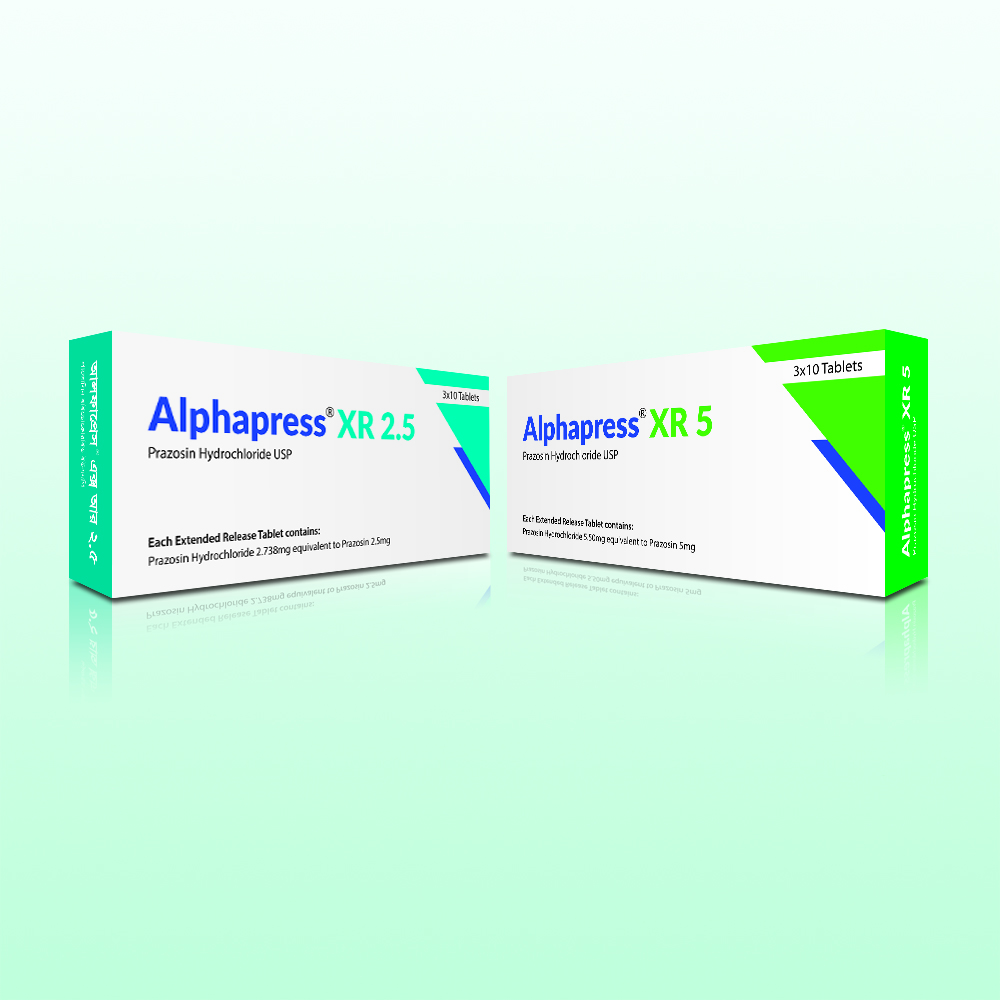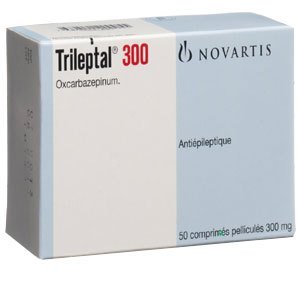Subtotal: ৳ 35.00
Alphapress XR (Tab) 5mg
৳ 15.00
Indications
Therapeutic Class
Pharmacology
Prazosin causes a decrease in total peripheral vascular resistance through selective inhibition of postsynaptic alpha-1-adrenoreceptors in vascular smooth muscle. In hypertensive patients, blood pressure is lowered in both the supine and standing positions; this effect is more pronounced on the diastolic blood pressure. Rebound elevation of blood pressure does not occur following abrupt cessation of Prazosin therapy.
The therapeutic efficacy of Prazosin in patients with congestive heart failure is ascribed to a reduction in left ventricular filling pressure, reduction in cardiac impedance and an augmentation of cardiac output. The use of Prazosin in congestive heart failure does not provoke a reflex tachycardia and blood pressure reduction is minimal in normotensive patients. Prazosin reduce the severity of the signs, symptoms, frequency and duration of attacks, in patients with Raynaud’s disease. In low dosage, antagonism of alpha-1-receptors on prostatic and urethral smooth muscle has been shown to improve the urinary pressure profile in men and to improve symptoms of benign prostatic hyperplasia. Clinical studies have shown that Prazosin therapy is not associated with adverse changes in the serum lipid profile.
Dosage
Hypertension:
- Recommended starting dose: 0.5 mg (in the evening), twice or thrice daily for 3 to 7 days. This dose should be increased to 1 mg twice or three times daily for a further 3 to 7 days. Thereafter, the daily dose should be increased gradually as determined by the patient’s response to the blood pressure lowering effect. Most patients are likely to be maintained on a dosage regimen of Prazosin alone of up to 15 mg daily in divided doses.
- Maximum dose: 20 mg in divided doses.
Patients receiving other antihypertensive therapy but with inadequate control:
- The dosage of the other drug should be reduced to a maintenance level and Prazosin initiated at 0.5 mg in the evening, then continuing with 0.5 mg twice or three times daily.
- Subsequent dosage increases should be made gradually depending upon the patient’s response.
Congestive heart failure:
- The recommended starting dose: 0.5 mg two, three or four times daily, increasing to 4 mg in divided doses. Dosage should be adjusted according to the patient’s response, based on careful monitoring of cardiopulmonary signs and symptoms.
- Usual daily maintenance dosage: 4 mg to 20 mg in divided doses.
Raynaud’s disease:
- The recommended starting dosage: 0.5 mg twice daily given for a period of 3 to 7 days and should be adjusted according to the patient’s clinical response.
- Usual maintenance dosage: 1 mg or 2 mg twice daily.
Benign prostatic hyperplasia:
- The recommended dosage: 0.5 mg twice daily for a period of 3 to 7 days, with the initial dose administered in the evening. The dosage should then be adjusted according to clinical response.
- The usual maintenance dosage: 2 mg twice daily.
Administration
Interaction
Contraindications
Side Effects
Pregnancy & Lactation
Precautions & Warnings
In patients with benign prostatic hyperplasia: Prazosin is not recommended for patients with a history of micturition syncope. It should not normally be administered to patients already receiving another alpha-1-antagonist.
In patients with congestive heart failure: Prazosin is not recommended in the treatment of congestive cardiac failure due to mechanical obstruction such as aortic valve stenosis, mitral valve stenosis, pulmonary embolism and restrictive pericardial disease.
In patients with hypertension: Postural hypotension evidenced by dizziness and weakness, or rarely loss of consciousness, has been reported, particularly with the commencement of therapy
Use in Special Populations
Patients with moderate to severe grades of renal impairment: Evidence to date shows that Prazosin does not further compromise renal function when used in patients with renal impairment. As some patients in this category have responded to small doses of Prazosin, it is recommended that therapy be initiated at 0.5 mg daily and that dosage increases be instituted cautiously.
Patients with hepatic dysfunction: it is recommended that therapy should be initiated at 0.5 mg daily and that dosage should be increased cautiously.
Use in the elderly: Since the elderly may be more susceptible to hypotension, therapy should be initiated with the lowest possible dose.
Overdose Effects
Symptoms: Hypotension, profound drowsiness, depressed reflexes.
Management: Symptomatic and supportive treatment. May be treated with activated charcoal if patient presents within 1 hr of ingestion. Postural measures and parenteral fluid volume replacement for severe hypotension and if necessary, cautious IV infusion of a vasopressor.

 Carex Classic Condoms | 3 pieces
Carex Classic Condoms | 3 pieces 




Reviews
There are no reviews yet.